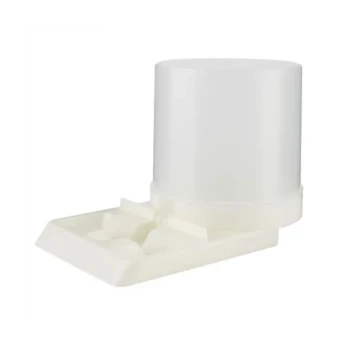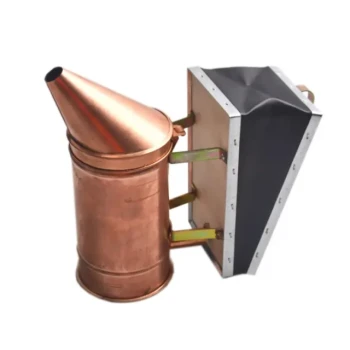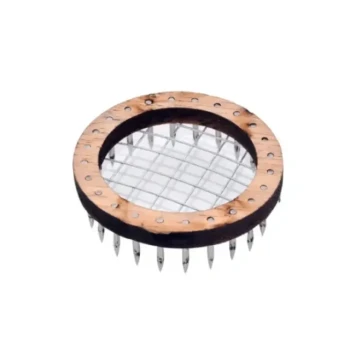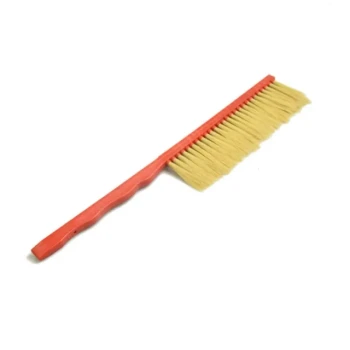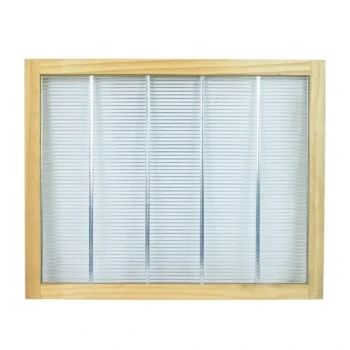In short, yes, but not in the way you might think. Adding a second brood box is a fundamental technique in swarm management, but it is not a guaranteed preventative measure. It works by addressing the primary trigger for swarming—brood nest congestion—giving the colony space to expand and delaying their natural impulse to reproduce.
The decision to swarm is a biological cascade, not a single event. Adding a box is a powerful way to interrupt that cascade by relieving spatial pressure, but it does not eliminate the underlying instinct. True swarm prevention is about proactive space management, not just adding hardware.
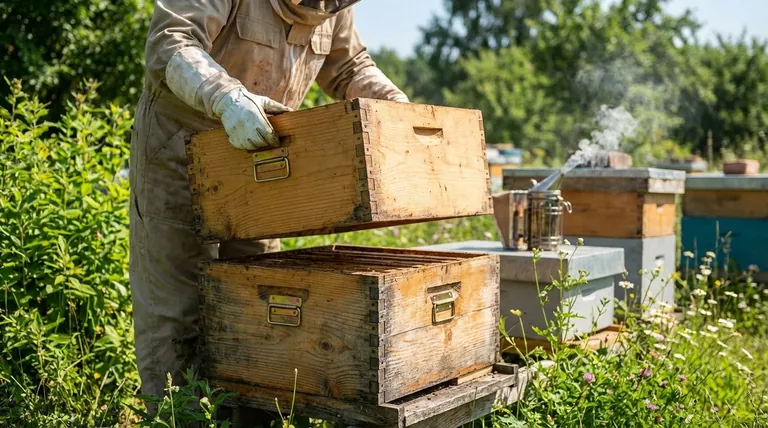
Why Colonies Actually Decide to Swarm
To effectively manage swarming, you must first understand it as a sign of colony success, not failure. Swarming is the natural method of reproduction for a honey bee colony.
The Natural Impulse to Reproduce
A strong, healthy colony with a productive queen will eventually fill its available space. This is a biological trigger that signals the colony is strong enough to divide itself, ensuring the survival of its genetics.
The Critical Trigger: Brood Nest Congestion
The most significant factor that initiates swarm preparations is a lack of space for the queen to lay eggs. When bees sense the queen is running out of open cells, they begin preparations to create a new queen and leave with the old one.
The Role of Queen Pheromone
The queen produces a pheromone that suppresses the workers' instinct to raise a new queen. In a crowded hive, this pheromone is diluted and cannot circulate effectively, signaling to the bees on the periphery that the queen's influence is waning and it's time to swarm.
How a Second Brood Box Manages the Swarm Impulse
Adding another brood box, often called "supering for brood," directly counteracts the feeling of confinement that triggers swarming.
Creating Vertical Space
The most immediate benefit is providing a new, open frontier for the colony to expand into. It gives the queen a fresh area to lay eggs, which immediately alleviates the brood nest congestion.
Breaking the "Brood Chimney"
Bees tend to work their way upward. By adding an empty or partially drawn box on top, you break the sense that they have reached the "top" of their available cavity, encouraging further upward expansion rather than outward swarming.
The Importance of Drawn Comb
As noted in best practices, using a box with drawn comb is significantly more effective than using one with new foundation. Drawn comb provides immediately usable space for the queen, whereas foundation requires a significant investment of time and resources from the bees before it can be used.
Understanding the Trade-offs and Common Pitfalls
Adding a box is a powerful tool, but it is not a "set and forget" solution. Its effectiveness depends entirely on timing and ongoing management.
Timing is Everything
If you add the box too early in the spring, a smaller colony may struggle to keep the expanded space warm, potentially chilling the brood. If you add it too late—after the bees have already started building swarm cells—it will likely not be enough to stop them.
It Is Not a Substitute for Inspections
Even with a second box, you must continue to perform regular hive inspections. The extra space buys you time, but a determined colony may still decide to swarm. You must still check for the presence of swarm cells.
The Risk of a "Honey-Bound" Brood Nest
During a strong nectar flow, bees may fill the new box with honey instead of giving the queen space for brood. This "honey-bound" condition can defeat the purpose of adding the box and can even worsen brood nest congestion.
Reversing vs. Simply Adding
For maximum effect, many beekeepers "reverse" their brood boxes. This involves moving the top, more crowded box to the bottom and placing the less-crowded bottom box on top. Adding a third box on top of that stack provides the ultimate combination of decongestion and expansion space.
Making the Right Choice for Your Colony
Your decision should be based on observation, not just the calendar. Assess your colony's strength and act accordingly.
- If your primary focus is proactive swarm management: Add a second brood box when the first box is approximately 70-80% full of bees, brood, and resources.
- If you are seeing early swarm signs (like queen cups): Immediately add a second box, preferably in combination with reversing the existing boxes, to disrupt the colony's preparations.
- If your colony is already building swarm cells: Adding a box is not enough. You must take more drastic action, such as making a split, to satisfy their swarming instinct.
By understanding that you are managing a natural impulse, you can use techniques like adding a brood box to guide your colony's growth and maintain a strong, productive hive.
Summary Table:
| Key Insight | Why It Matters |
|---|---|
| Addresses Congestion | Adding space directly counters the primary trigger for swarming. |
| Timing is Critical | Must be added before swarm cells are built to be effective. |
| Not a Guarantee | Does not eliminate the swarming instinct; regular inspections are still vital. |
| Use Drawn Comb | Provides immediate, usable space for the queen, unlike foundation. |
Build a stronger, more productive apiary with HONESTBEE.
As a trusted supplier for commercial apiaries and beekeeping equipment distributors, we provide the high-quality supplies—including brood boxes and drawn comb—you need to implement effective swarm management strategies. Our wholesale-focused operations ensure you get the reliable equipment required to maintain healthy, expanding colonies.
Let's discuss your apiary's needs. Contact our team today to learn more about our products and wholesale solutions.
Visual Guide
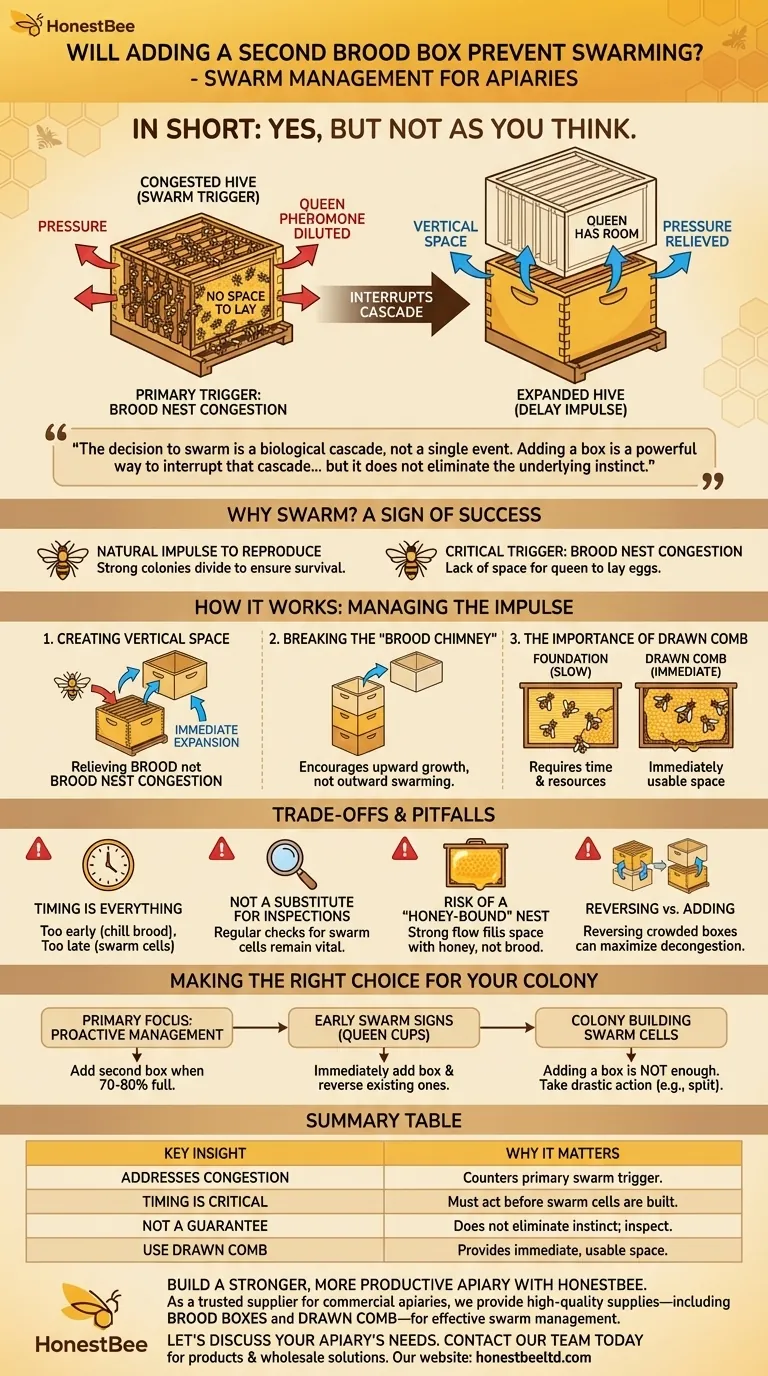
Related Products
- Professional Drop-Style Hive Handles for Beekeeping
- HONESTBEE Entrance Bee Feeder Professional Hive Nutrition Solution for Beekeeping
- Professional Hive Front Entrance Bee Feeder
- HONESTBEE Professional Entrance Bee Feeder Hive Nutrition Solution
- Professional Engraved Round Hive Number Tags for Beekeeping
People Also Ask
- Why are hive tools painted in bright colors? Prevent Losing Your Essential Beekeeping Gear
- What is the role of gloves in beekeeping, especially for beginners? Build Confidence & Safety
- What makes polyurethane foam environmentally friendly? The Surprising Benefits of a Durable, Inert Material
- What is beekeeping equipment? Essential Tools for Commercial Apiaries & Distributors
- What equipment do I need to start beekeeping? The Essential Beginner's Guide

